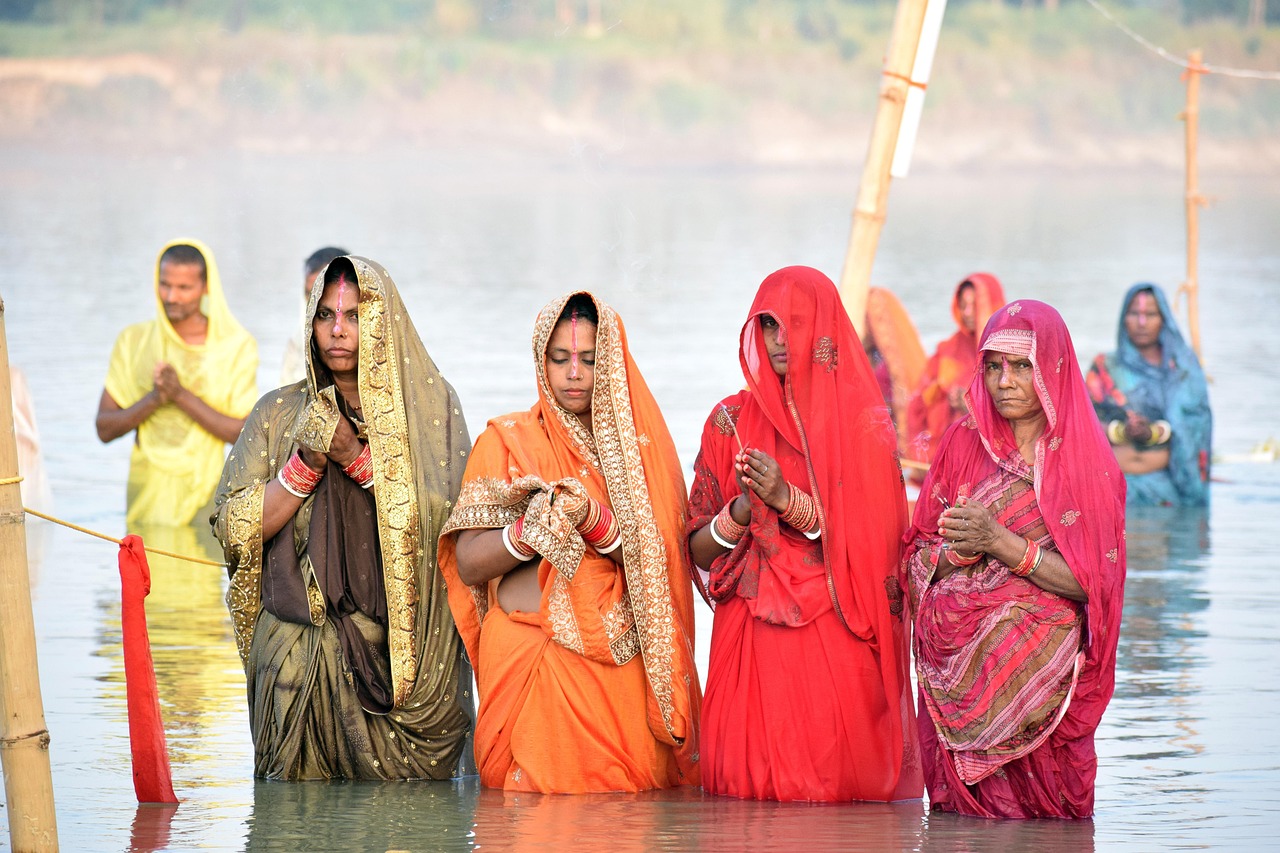This article delves into the cultural, spiritual, and social significance of Durga Puja, emphasizing its deep-rooted traditions and the communal spirit it fosters among Bengalis worldwide.
The Historical Significance of Durga Puja
Durga Puja boasts a rich history that intertwines with the evolution of Bengali society. Originating in ancient rituals, it has transformed over the centuries into a grand celebration that reflects the changing dynamics of culture and community. Understanding its historical context is essential for appreciating its current relevance.
Mythological Roots of Durga Puja
The festival is deeply rooted in mythology, primarily the epic tale of Goddess Durga’s triumph over the buffalo demon Mahishasura. This narrative not only symbolizes the victory of good over evil but also serves as a source of inspiration, reminding devotees of the strength and resilience needed to overcome life’s challenges.
Goddess Durga: The Divine Feminine
Goddess Durga embodies strength, motherhood, and protection. Her portrayal during the festival highlights the reverence for feminine power within Hindu culture, making her a central figure in the celebrations.
Iconography of Goddess Durga
The artistic representation of Goddess Durga is a testament to Bengal’s rich cultural heritage. Each idol, adorned with intricate details, tells a unique story, enhancing both the visual and emotional appeal of the festival.
The Community Aspect of Durga Puja
One of Durga Puja’s most beautiful aspects is its ability to unite communities. It fosters a spirit of togetherness, as people from diverse backgrounds come together to celebrate, reinforcing social bonds and cultural identity.
Social Gatherings and Festivities
During Durga Puja, social gatherings are prevalent. Friends and family unite to share meals, participate in rituals, and enjoy cultural performances, thereby strengthening communal ties and creating lasting memories.
Modern Interpretations of Durga Puja
In contemporary times, Durga Puja has evolved, incorporating modern elements while retaining its traditional essence. This adaptability ensures its relevance in today’s society, appealing to the younger generation and fostering a sense of belonging.
Global Celebrations of Durga Puja
As Bengalis have migrated worldwide, Durga Puja celebrations have spread across the globe, showcasing its universal appeal and the diaspora’s efforts to maintain cultural ties. These celebrations reflect the rich tapestry of Bengali identity, no matter where individuals reside.
Conclusion: The Timeless Spirit of Durga Puja
Durga Puja transcends mere celebration; it embodies the essence of Bengali culture, spirituality, and community. Its enduring significance continues to inspire generations, making it a cherished tradition for all Bengalis, uniting them in a shared celebration of heritage and devotion.

The Historical Significance of Durga Puja
Durga Puja is not merely a festival; it is a vibrant tapestry woven with threads of history, culture, and spirituality that have evolved over centuries. Its significance is deeply rooted in the Bengali identity, making it a cornerstone of communal life. To understand the essence of this celebration, one must delve into its historical origins, which provide a backdrop for its contemporary relevance.
The origins of Durga Puja can be traced back to ancient Bengal, where it was initially celebrated as a harvest festival. Over time, it transformed into a grand celebration of the goddess Durga, symbolizing the victory of good over evil. This transition reflects the socio-cultural evolution of Bengali society, showcasing how mythology and tradition have shaped community values.
One of the most compelling aspects of Durga Puja’s history is the mythological narrative surrounding Goddess Durga’s battle with the buffalo demon Mahishasura. This story not only highlights the triumph of divine forces but also serves as a metaphor for the struggles faced by society. The festival’s rituals and practices draw from these ancient tales, reinforcing the connection between the past and the present.
Moreover, Durga Puja has historically been a time for community bonding. In the early days, local villages would come together to organize the festivities, fostering a sense of unity and shared purpose. This tradition continues today, as families and friends gather to participate in rituals, enjoy cultural performances, and share meals, strengthening their communal ties.
As we look at the historical significance of Durga Puja, it becomes evident that this festival transcends mere celebration. It encapsulates the essence of Bengali culture and serves as a reminder of the values and traditions that have been passed down through generations. Understanding its rich history is crucial for appreciating its enduring importance in today’s world.
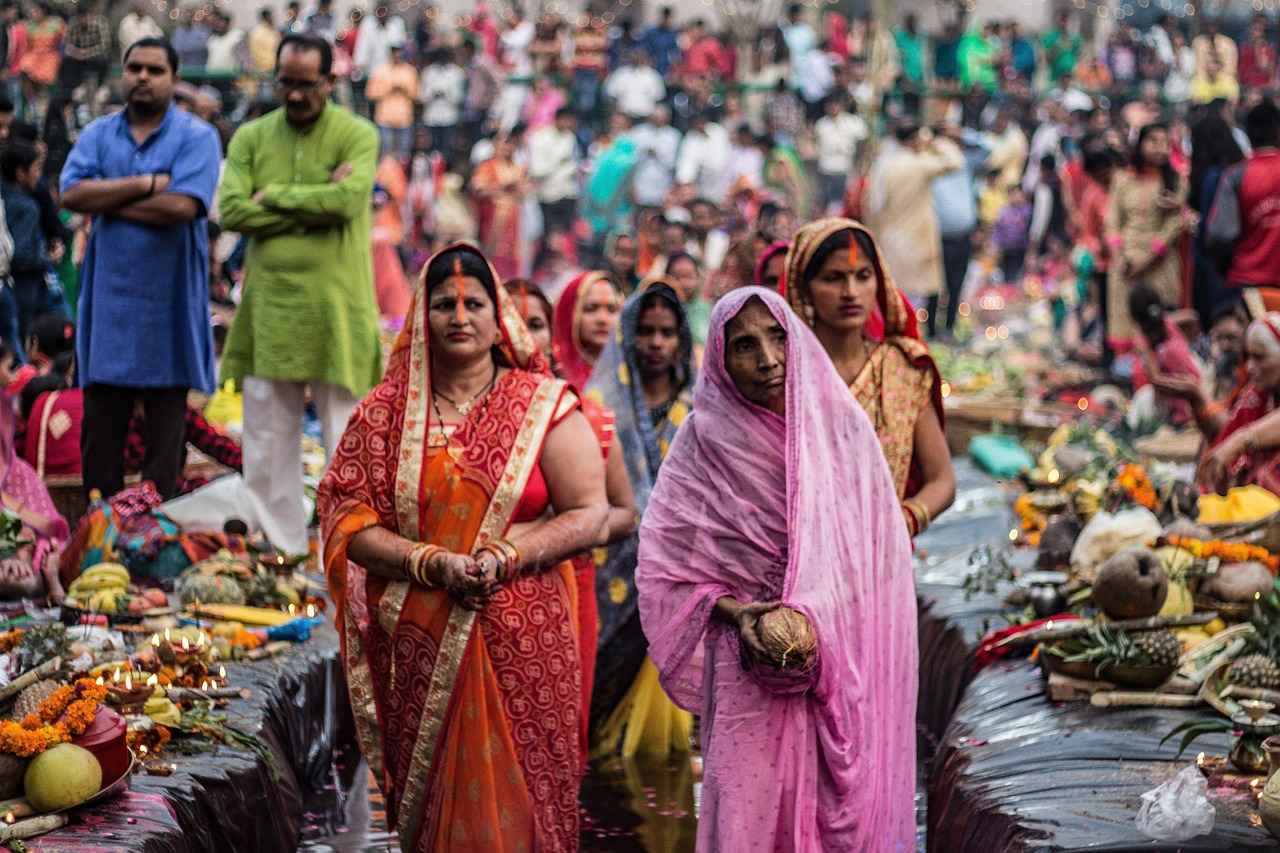
Mythological Roots of Durga Puja
Durga Puja is not merely a festival; it is a vibrant tapestry woven with rich mythology and cultural significance. At its core lies the enchanting tale of Goddess Durga and her fierce battle against the buffalo demon Mahishasura. This legendary narrative is a powerful symbol of the eternal struggle between good and evil, and it resonates deeply with millions of devotees.
The story begins with Mahishasura, a demon who gained immense power and terrorized the heavens. The gods, unable to defeat him, united their divine energies to create Goddess Durga, a formidable warrior. Armed with weapons gifted by each god, she descended to Earth to confront the demon. The ensuing battle lasted for nine days and nights, culminating in Mahishasura’s defeat on the tenth day, known as Vijaya Dashami. This victory signifies the triumph of righteousness over malevolence, embodying hope and renewal.
During Durga Puja, the narrative is not just recounted; it is celebrated with great fervor. The festival transforms communities into vibrant hubs of activity, where elaborate idols of Goddess Durga are crafted and displayed with reverence. Each idol, intricately designed, tells its own story, capturing the essence of the goddess’s strength and grace.
The significance of this myth extends beyond the religious sphere; it serves as a reminder of the power of feminine energy and the importance of standing against oppression. Goddess Durga’s embodiment of courage and resilience inspires individuals to confront their own challenges, making the festival a source of empowerment.
In essence, the mythological roots of Durga Puja are not just historical tales; they are vital threads that bind the community together, fostering a sense of identity and purpose. As the festival approaches, the spirit of togetherness and celebration fills the air, reminding us all of the enduring message of hope and strength that Goddess Durga represents.
Goddess Durga: The Divine Feminine
Goddess Durga holds a revered position in Hindu mythology, symbolizing the embodiment of strength, motherhood, and protection. Her presence during the Durga Puja festival serves as a powerful reminder of the feminine strength that is deeply ingrained in Hindu culture. This celebration is not merely a religious observance; it is a significant cultural event that emphasizes the importance of female energy and empowerment.
Throughout history, Goddess Durga has been celebrated as the Divine Feminine, representing the victory of good over evil. The festival narrates the epic tale of her battle against the buffalo demon, Mahishasura, which symbolizes the triumph of righteousness. This narrative resonates with many, as it portrays the strength of women in overcoming challenges and adversities.
During Durga Puja, the artistic representation of Goddess Durga is a sight to behold. The idols are adorned with intricate details and vibrant colors, each telling a unique story that reflects the rich cultural heritage of Bengal. The iconography of the goddess, equipped with her weapons and riding a lion, conveys deep symbolic meanings that resonate with devotees, reinforcing the festival’s spiritual significance.
Moreover, the festival fosters a sense of community and togetherness. People from diverse backgrounds come together to celebrate, sharing meals, participating in rituals, and enjoying cultural performances. This communal spirit is a testament to the festival’s ability to unite individuals under the banner of shared beliefs and values.
In modern times, Durga Puja has evolved, incorporating contemporary elements while retaining its traditional essence. This adaptability ensures its relevance in today’s society, appealing to younger generations and maintaining its status as a cornerstone of Bengali identity.
In conclusion, the portrayal of Goddess Durga during Durga Puja is a powerful expression of feminine power and resilience. The festival not only celebrates her divine qualities but also reinforces the values of strength and unity within the community, making it a cherished tradition for Bengalis around the world.
Iconography of Goddess Durga
is a fascinating aspect of the Durga Puja festival, showcasing the intricate artistry and rich cultural heritage of Bengal. Each idol of Goddess Durga is not just a representation; it is a symbolic narrative that encapsulates the essence of the goddess and the values she embodies.
The idols are often adorned with vibrant colors and intricate details, reflecting the skill and dedication of the artisans who create them. From the fierce expressions of the goddess to the delicate embellishments on her attire, every element is meticulously crafted to convey a story. The facial expressions of the idol are designed to evoke emotions, drawing devotees into a deeper spiritual experience.
| Element | Symbolism |
|---|---|
| Weapons | Represent the power to combat evil and protect the righteous. |
| Lion Mount | Symbolizes strength and courage, reflecting the goddess’s role as a protector. |
| Facial Expression | Conveys determination and ferocity, embodying the goddess’s fierce nature. |
Additionally, the color palette used in the idols plays a significant role in conveying various themes. For instance, red signifies power and passion, while gold reflects prosperity and divinity. Each hue is purposefully chosen to enhance the emotional resonance of the idol, making the viewing experience both visually stunning and spiritually uplifting.
Furthermore, the rituals surrounding the unveiling of the idol are steeped in tradition, adding layers of meaning to the iconography. These rituals not only celebrate the goddess but also reinforce the communal bonds among worshippers. The collective experience of admiring the idol fosters a sense of unity and shared devotion, making Durga Puja a truly communal celebration.
In conclusion, the iconography of Goddess Durga serves as a profound reminder of the intersection of art, spirituality, and community. Each idol is a testament to the rich cultural tapestry of Bengal, inviting devotees to engage with the divine in a deeply personal and communal way.
Symbolism in the Durga Idol
The Durga idol is not merely a representation of the goddess; it is a profound embodiment of various spiritual and cultural elements that resonate deeply with devotees. Each aspect of the idol is meticulously crafted, carrying significant meanings that enhance the festival’s spiritual essence.
- Weapons of the Goddess: Goddess Durga is depicted wielding an array of weapons, each symbolizing her divine power and ability to combat evil. For example, her trident represents the three gunas (qualities) of nature: sattva (goodness), rajas (passion), and tamas (ignorance). These weapons not only signify her strength but also serve as a reminder to devotees of the battle against internal and external evils.
- The Lion Mount: Durga’s mount, the lion, symbolizes courage and power. The lion is often seen as the king of the jungle, representing the strength required to overcome challenges. This connection enhances the narrative of the goddess as a protector and warrior, reinforcing the idea that true strength comes from within.
- Facial Expressions: The expressions on Durga’s face are crafted to convey a range of emotions, from fierce determination to serene compassion. This duality emphasizes the goddess’s multifaceted nature, reminding devotees that strength can coexist with gentleness.
- Color Symbolism: The vibrant colors used in the idol’s attire and surroundings are also significant. Red often symbolizes power and passion, while gold represents prosperity and divinity. These colors contribute to the overall visual impact of the idol, evoking a sense of reverence and awe among the devotees.
In essence, the symbolism embedded in the Durga idol is a powerful reminder of the spiritual journey each devotee embarks upon during the festival. It serves not only as an object of worship but also as a source of inspiration, encouraging individuals to embody the qualities of the goddess in their daily lives.
As the festival unfolds, the Durga idol becomes a focal point of devotion and celebration, drawing communities together in a shared experience of spirituality and cultural heritage.
The Cultural Practices Surrounding Durga Puja
Durga Puja is a festival that transcends mere religious observance, encapsulating a rich tapestry of cultural practices that resonate deeply within Bengali society. It is a time when communities come alive with vibrant expressions of art, music, and dance, showcasing the historical traditions that have been passed down through generations.
The festivities begin with artistic displays that feature intricately crafted idols of Goddess Durga, each telling a unique story through its design. Local artisans dedicate countless hours to create these masterpieces, which become the focal point of the celebrations. The process of idol-making itself is a cultural practice that involves the entire community, fostering collaboration and creativity.
- Music: The sound of traditional Bengali music fills the air during Durga Puja. From dhak (a traditional drum) to devotional songs, music plays a vital role in elevating the festival’s spirit. Performances often include folk dances that reflect the region’s rich heritage.
- Dance: Cultural performances, including traditional dance forms, are integral to the celebrations. These dances not only entertain but also convey stories from Bengali folklore, connecting the community to its roots.
- Art: The festival is a canvas for artists, with decorative pandals (temporary structures) showcasing innovative designs. Each pandal reflects contemporary themes while honoring traditional aesthetics, creating a visual feast for visitors.
Moreover, the culinary aspect of Durga Puja cannot be overlooked. Food stalls serve a variety of traditional Bengali dishes, bringing people together over shared meals. This communal dining experience fosters a sense of unity and belonging among participants.
In conclusion, the cultural practices surrounding Durga Puja are a vibrant celebration of Bengali identity. They embody the spirit of togetherness, creativity, and reverence for tradition, making the festival a significant event that resonates with people of all ages.

The Community Aspect of Durga Puja
Durga Puja is not just a festival; it is a celebration of unity, culture, and community spirit. One of the most beautiful aspects of Durga Puja is its ability to unite communities. The festival fosters a spirit of togetherness, as people from diverse backgrounds come together to celebrate the triumph of good over evil. This unique characteristic of the festival is what sets it apart, making it a cherished event for countless individuals.
During Durga Puja, the streets come alive with vibrant decorations, music, and dance. Local communities play a pivotal role in organizing the festivities, with each neighborhood contributing its own flavor to the celebrations. This collective effort not only enhances the festival’s grandeur but also strengthens the bonds among residents. From planning the rituals to setting up the pandals (temporary structures), the involvement of community members is crucial.
- Community Involvement: The organization of Durga Puja involves significant participation from local committees, which are often composed of volunteers who dedicate their time and resources to ensure a successful celebration.
- Social Gatherings: The festival serves as a platform for social gatherings, where friends and families come together to share meals, participate in rituals, and enjoy cultural performances. These interactions help to reinforce relationships and foster a sense of belonging.
- Inclusivity: Durga Puja transcends religious boundaries, inviting people from various backgrounds to partake in the festivities. This inclusivity promotes harmony and understanding among different communities.
Moreover, the festival acts as a catalyst for cultural exchange. Various art forms, including music, dance, and theater, are showcased during the celebrations, allowing participants to appreciate and learn from one another’s traditions. This cultural amalgamation enriches the community experience, making Durga Puja a true celebration of diversity.
In conclusion, the community aspect of Durga Puja is a testament to its significance beyond mere religious observance. It encapsulates the spirit of unity, inclusivity, and cultural richness, making it a vital part of the Bengali identity. As people come together to celebrate, they not only honor the goddess but also strengthen the ties that bind them, ensuring that the festival remains a cherished tradition for generations to come.
Organizing Pujas: Community Involvement
The organization of Durga Puja is a vibrant tapestry woven from the collective efforts of the community. This festival, which holds immense significance for Bengalis, is not merely a religious observance but a celebration that brings people together, fostering unity and cooperation.
At the heart of this celebration are local committees that play a crucial role in the planning and execution of the event. These committees are often formed by enthusiastic volunteers who dedicate their time and energy to ensure that every aspect of the festival is executed flawlessly. From the initial stages of gathering funds to the final days of the celebration, these groups work tirelessly to create a joyful atmosphere.
Community participation is evident in various ways, including:
- Fundraising: Members of the community come together to raise funds through donations and sponsorships, ensuring that the festivities are well-funded.
- Decoration: Local artisans and volunteers collaborate to decorate the pandals (temporary structures) and surrounding areas, showcasing their creativity and cultural heritage.
- Rituals and Performances: Community members actively participate in rituals, cultural performances, and traditional dances, enriching the festive experience.
Moreover, the festival serves as a platform for social interaction, where people from diverse backgrounds unite in celebration. This sense of togetherness not only strengthens community bonds but also instills a sense of pride and belonging among participants.
In conclusion, the organization of Durga Puja epitomizes the spirit of community involvement. It is a celebration that thrives on collective effort, showcasing the beauty of collaboration and the strength of shared traditions. Through the active participation of local committees and community members, Durga Puja continues to flourish as a symbol of unity and cultural richness.
Social Gatherings and Festivities
During the vibrant celebration of Durga Puja, social gatherings emerge as a cornerstone of the festivities, fostering a sense of unity and community among participants. This annual festival not only marks the worship of Goddess Durga but also serves as a platform for friends and family to reconnect, share experiences, and create lasting memories.
As the festival unfolds, the air is filled with excitement and anticipation. Families gather to prepare traditional meals, which often include delicacies such as bhog (a sacred offering of food), sweets, and savory dishes. These meals are shared not just among family members but also with neighbors and friends, promoting a spirit of togetherness. The act of sharing food during Durga Puja symbolizes the abundance and generosity that the festival represents.
In addition to communal meals, rituals and prayers are an integral part of the celebration. Communities come together to participate in pujas (worship rituals), where everyone, from children to the elderly, takes part. This collective participation strengthens social bonds and encourages a sense of belonging. The rituals often include singing devotional songs, performing traditional dances, and reciting prayers, creating a lively atmosphere filled with joy and reverence.
Cultural performances are another highlight of Durga Puja. Local artists showcase their talents through music, dance, and drama, reflecting the rich cultural heritage of Bengal. These performances not only entertain but also educate attendees about the stories and values associated with the festival, thus enriching the communal experience.
Ultimately, the social gatherings during Durga Puja are a beautiful reminder of the importance of community. They emphasize the festival’s role in fostering connections, celebrating shared traditions, and creating an inclusive environment for all. As people come together to honor the divine feminine, they also celebrate their collective identity, making Durga Puja a truly remarkable experience.
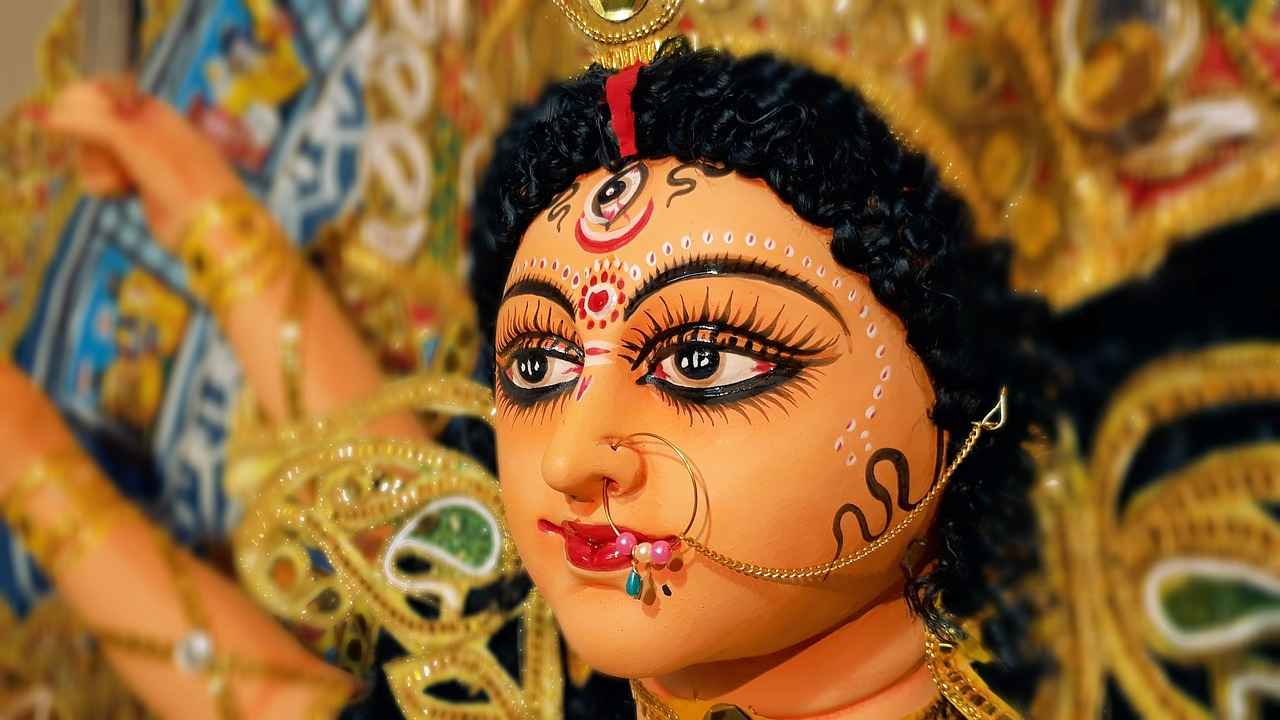
Durga Puja and Its Impact on Bengali Identity
Durga Puja is not merely a festival; it is a profound expression of Bengali identity that resonates deeply within the hearts of millions. This vibrant celebration encapsulates the rich cultural heritage, traditions, and values of the Bengali community, both within India and across the globe. For many, it serves as a powerful reminder of their roots and a celebration of their shared history.
The festival, occurring annually during the autumn season, brings together families, friends, and communities in a collective display of devotion and joy. The elaborate rituals, artistic decorations, and communal feasts create a sense of unity, reinforcing the bonds among participants. As people gather to worship the Goddess Durga, they also reaffirm their commitment to the values she represents: strength, resilience, and the triumph of good over evil.
Moreover, Durga Puja plays a significant role in the diaspora, where Bengalis living abroad organize celebrations that mirror those back home. These events not only maintain cultural ties but also introduce the rich traditions of Bengali culture to a broader audience. This aspect of the festival fosters a sense of belonging, as expatriates connect with their heritage while celebrating their identity in a foreign land.
Furthermore, the festival’s impact extends beyond religious observance; it influences various aspects of Bengali life, including art, music, and literature. The intricate designs of the idols, the melodious sounds of traditional music, and the poetic verses recited during the festivities all contribute to a vibrant cultural tapestry that is uniquely Bengali.
In conclusion, Durga Puja is a cornerstone of Bengali identity, embodying the community’s values and cultural heritage. It reinforces a sense of belonging and pride among Bengalis, whether in their homeland or abroad. This festival not only celebrates the divine but also serves as a powerful reminder of the collective identity that binds the Bengali community together.
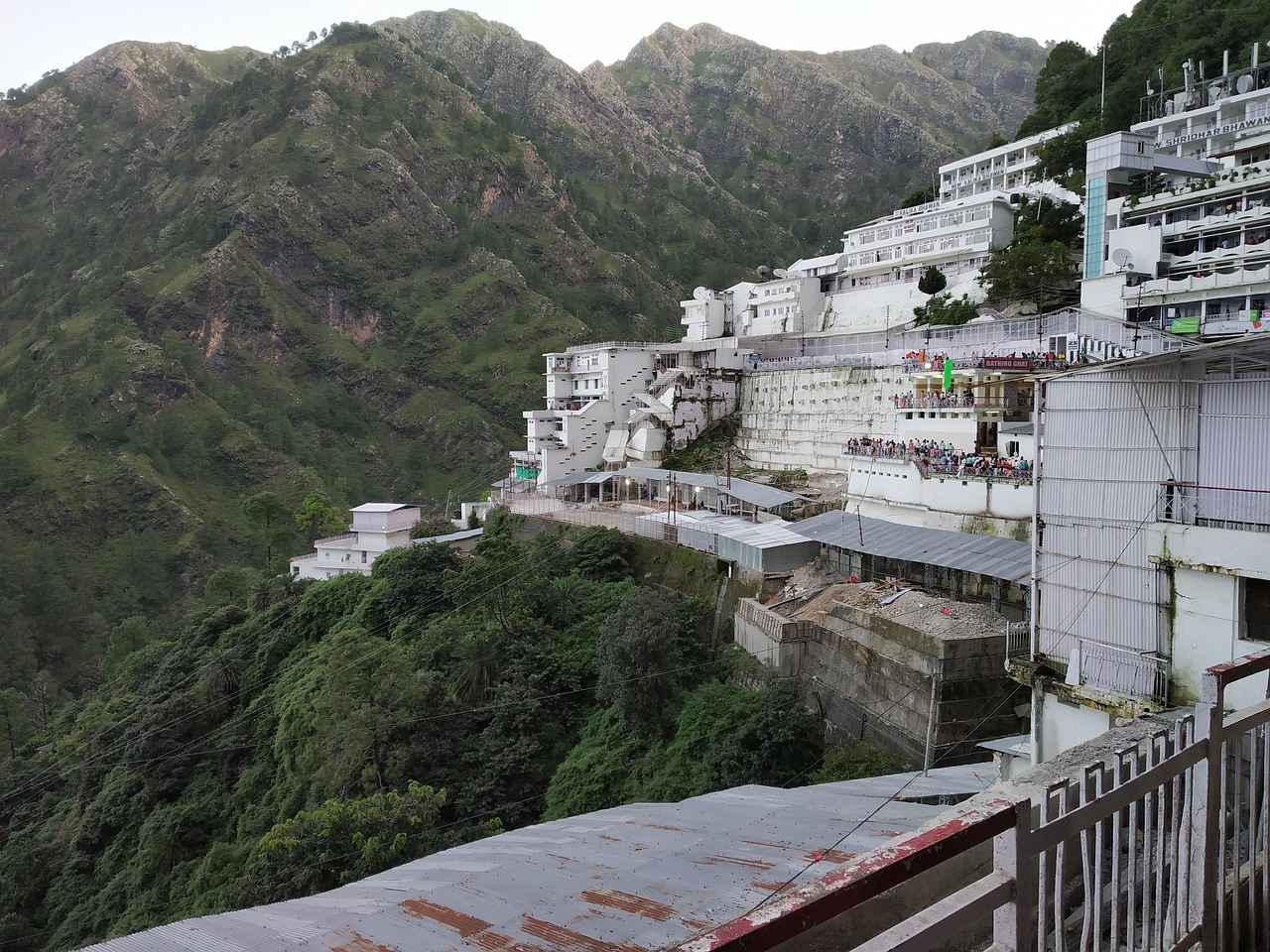
Modern Interpretations of Durga Puja
have become a fascinating blend of tradition and contemporary influences, ensuring that this age-old festival remains relevant in today’s fast-paced world. As society evolves, so does the way we celebrate significant events like Durga Puja, making it a dynamic and engaging experience for all.
In recent years, Durga Puja has embraced various modern elements while preserving its traditional essence. This adaptability is crucial, as it attracts the younger generation who seek both cultural roots and contemporary relevance. The festival is no longer confined to traditional rituals; it has expanded to include artistic expressions, technological advancements, and global outreach.
- Artistic Innovations: Modern Durga Puja pandals (temporary structures) now showcase innovative designs, incorporating themes that resonate with current social issues, environmental concerns, and popular culture. Artists use recycled materials and modern art forms to create stunning displays that captivate visitors.
- Technology Integration: The use of technology has revolutionized the way Durga Puja is celebrated. Live streaming of rituals, virtual reality experiences, and social media campaigns enhance engagement, allowing devotees to connect with the festivities from anywhere in the world.
- Global Celebrations: As the Bengali diaspora grows, so does the celebration of Durga Puja across the globe. Cities like New York, London, and Sydney host elaborate events that reflect local cultures while maintaining the core elements of the festival, thus fostering a sense of community among expatriates.
Moreover, the younger generation is increasingly taking part in organizing events, bringing fresh ideas and perspectives. This involvement not only enriches the festival but also ensures that the younger crowd feels a sense of ownership and connection to their heritage.
In conclusion, the reflect a beautiful synthesis of tradition and innovation. This evolution not only preserves the festival’s cultural significance but also ensures its appeal to future generations, making it a vibrant celebration that continues to thrive in a changing world.
Global Celebrations of Durga Puja
As the Bengali diaspora has spread across the globe, the vibrant and cherished festival of Durga Puja has transcended geographical boundaries, taking on a new life in various countries. This remarkable phenomenon not only underscores the festival’s universal appeal but also highlights the diaspora’s unwavering commitment to preserving their rich cultural heritage.
In cities like London, New York, and Toronto, elaborate Durga Puja celebrations are organized, drawing in not just Bengalis but people from all walks of life. The festivities often feature traditional rituals, cultural performances, and delectable Bengali cuisine, inviting a diverse audience to partake in the joy and reverence of this sacred occasion. These global celebrations often serve as a bridge, connecting the expatriates to their roots while introducing the beauty of Bengali culture to a wider audience.
- London: The Durga Puja celebrations at the London Durga Puja Committee attract thousands each year, showcasing elaborate idols and cultural programs.
- New York: The New York Durga Puja has become a hallmark event, featuring a blend of traditional and contemporary performances, allowing attendees to experience the essence of Bengali culture.
- Toronto: The Bengali Cultural Association hosts vibrant festivities, where locals can enjoy traditional dances, music, and authentic Bengali dishes.
The festival’s ability to adapt and flourish in foreign lands is a testament to the resilience and creativity of the Bengali community. By incorporating local customs and engaging with the surrounding culture, these celebrations not only honor the traditions of Durga Puja but also foster a sense of unity among diverse communities.
In conclusion, the global celebrations of Durga Puja exemplify the strength of cultural identity and community bonds among Bengalis worldwide. This festival serves as a reminder of the importance of cultural preservation and the joy of sharing one’s heritage with others, ensuring that the spirit of Durga Puja continues to thrive, no matter where it is celebrated.
Technological Influence on Durga Puja
The integration of technology into the organization and promotion of Durga Puja has significantly enhanced the overall experience, making it more accessible and engaging for devotees around the world. This transformation reflects the festival’s adaptability to contemporary trends while preserving its rich cultural heritage.
- Virtual Celebrations: With the advent of the internet, many communities now host virtual Durga Puja celebrations. This has allowed people who are unable to attend in person, whether due to distance or other constraints, to participate in the rituals and festivities from the comfort of their homes. Live streaming of puja rituals and cultural programs ensures that the spirit of the festival reaches a wider audience.
- Social Media Engagement: Platforms like Facebook, Instagram, and Twitter have become vital tools for promoting Durga Puja. Organizers use these platforms to share updates, engage with the community, and showcase the artistic creations associated with the festival. The use of hashtags allows for broader participation and sharing of experiences, creating a sense of unity among devotees.
- Online Fundraising: Many community pujas now utilize online crowdfunding platforms to raise funds for their celebrations. This innovative approach not only simplifies the donation process but also encourages participation from a global audience, ensuring that even small contributions can make a significant impact.
- Mobile Applications: Several mobile applications have been developed to assist devotees in navigating the various events and rituals of Durga Puja. These apps provide schedules, locations, and even virtual tours of pandals, enhancing the overall experience for attendees.
- Augmented Reality (AR) and Virtual Reality (VR): Some puja committees are experimenting with AR and VR technologies to create immersive experiences. This allows participants to explore pandals and interact with the festival in ways that were previously unimaginable.
In conclusion, the technological influence on Durga Puja has not only modernized the way the festival is celebrated but also ensured that its essence remains intact. By embracing technology, the festival continues to thrive in the digital age, fostering a sense of community and connection among Bengalis worldwide.
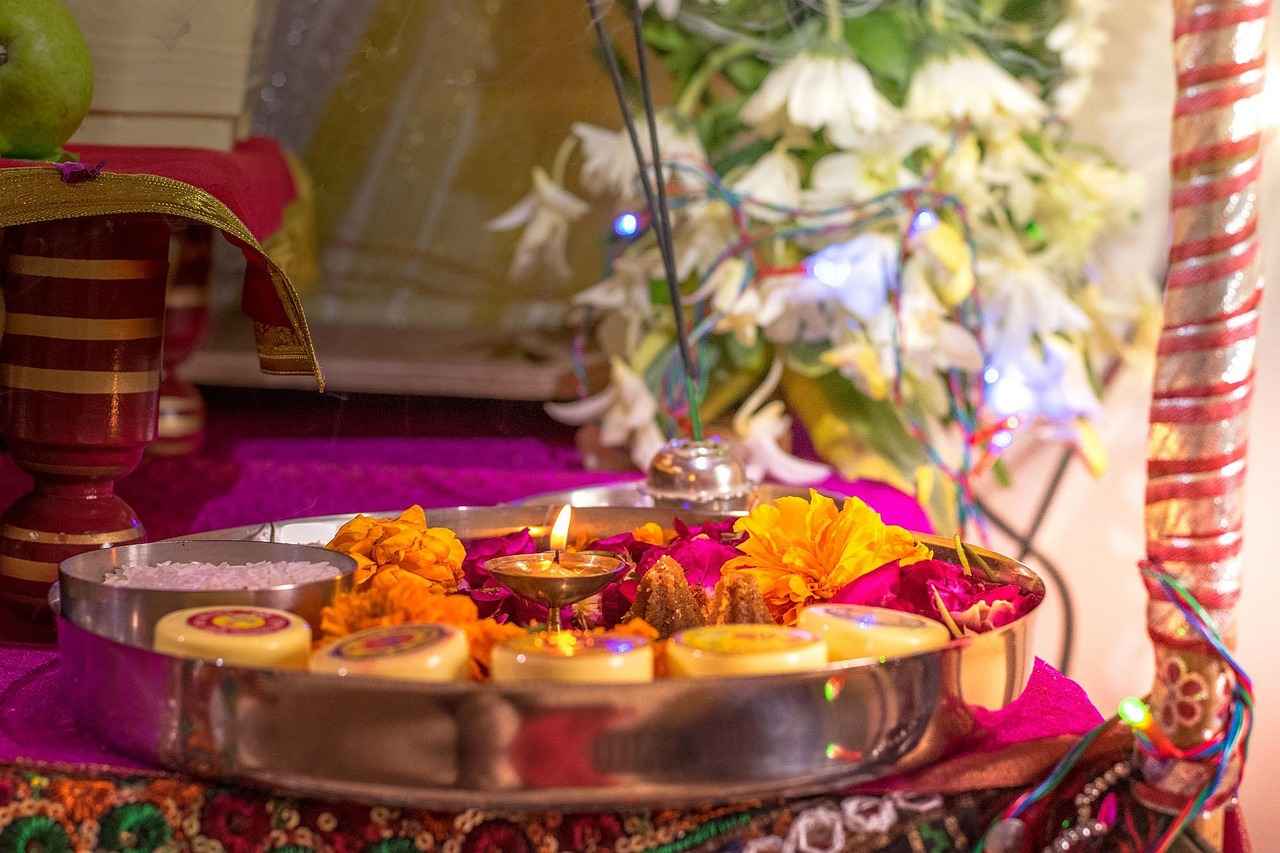
Conclusion: The Timeless Spirit of Durga Puja
Durga Puja is not merely a festival; it is a vibrant tapestry woven with the threads of Bengali culture, spirituality, and community. This grand celebration, which takes place annually, is a reflection of the rich heritage and traditions that have been passed down through generations. The essence of Durga Puja resonates deeply within the hearts of Bengalis, both in India and around the world.
At its core, Durga Puja signifies the triumph of good over evil, encapsulated in the mythological tale of Goddess Durga defeating the demon Mahishasura. This narrative is not only a story of victory but also a symbol of empowerment and resilience. The festival serves as a reminder of the strength inherent in the feminine divine, encouraging individuals to embrace their own inner power.
The preparations for Durga Puja are a community affair, with local committees coming together to organize the festivities. This collaborative spirit fosters a sense of belonging and unity among participants. Streets are adorned with elaborate decorations, and the air is filled with the sounds of traditional music and the aroma of delicious Bengali cuisine. Families gather to share meals, participate in rituals, and enjoy cultural performances, reinforcing social bonds.
Moreover, Durga Puja has evolved over the years, adapting to modern influences while retaining its traditional essence. Today, the festival is celebrated not only in India but also across the globe, thanks to the Bengali diaspora. This global reach highlights the festival’s universal appeal and its ability to connect people across cultures and borders.
In conclusion, Durga Puja transcends the boundaries of a mere celebration; it embodies the spirit of Bengali identity and community. Its rich traditions and cultural significance continue to inspire generations, making it a cherished and enduring legacy for all Bengalis.
Frequently Asked Questions
- What is the significance of Durga Puja for Bengalis?
Durga Puja is not just a festival; it’s a celebration of culture, spirituality, and community. It symbolizes the triumph of good over evil and fosters unity among Bengalis, both in India and abroad.
- How did Durga Puja originate?
The origins of Durga Puja date back centuries, intertwined with mythology and the evolution of Bengali society. The festival commemorates Goddess Durga’s victory over the buffalo demon Mahishasura, representing strength and resilience.
- What role does the community play in Durga Puja celebrations?
Community involvement is crucial in organizing Durga Puja. Local committees and volunteers work together to plan and execute the festivities, showcasing collective effort and strengthening social bonds.
- How has Durga Puja evolved in modern times?
Durga Puja has adapted to contemporary society by incorporating modern elements while maintaining its traditional essence. This evolution helps keep the festival relevant, especially for younger generations.
- Why is Durga Puja important for Bengali identity?
Durga Puja serves as a cornerstone of Bengali identity, reflecting cultural heritage and values. It reinforces a sense of belonging and pride among Bengalis, connecting them to their roots regardless of where they live.
